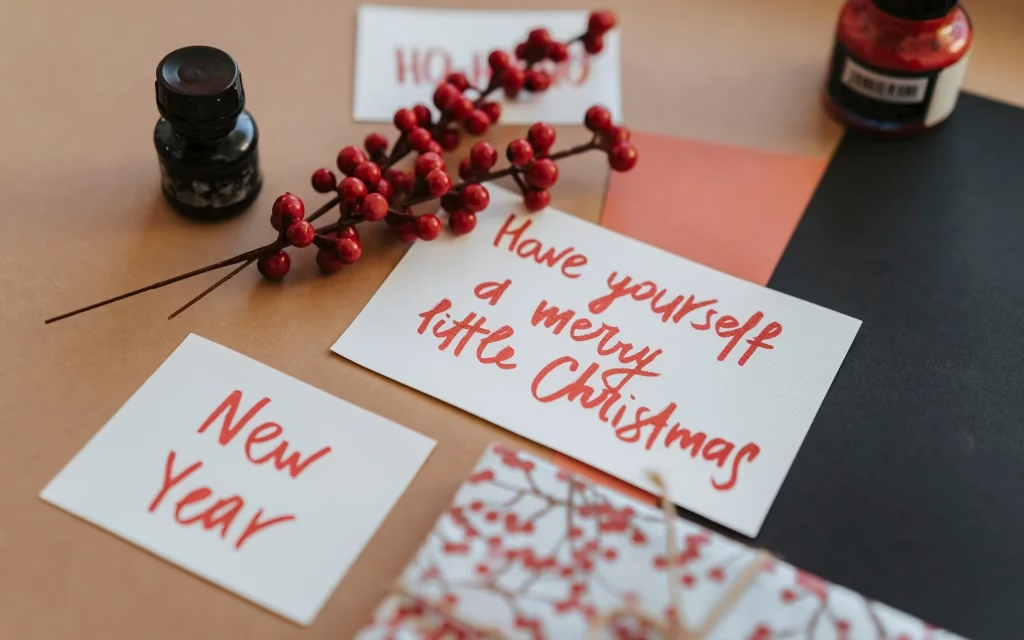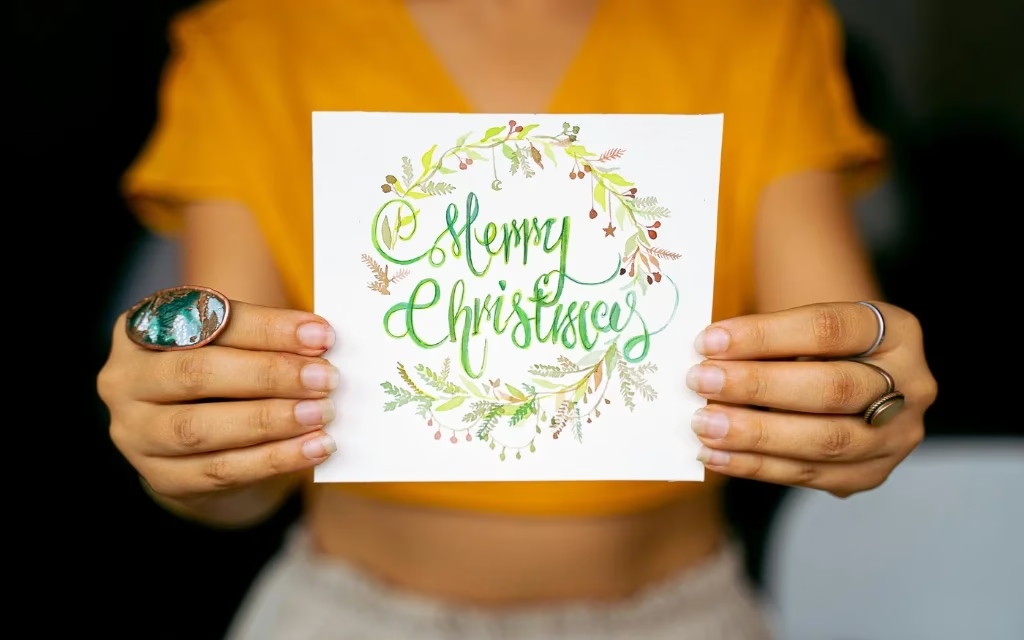Sending a christmas card remains one of the most heartfelt ways to connect during the festive season in Australia. Whether it’s a handwritten message, a humorous family photo, or a beautifully illustrated design, a well-chosen christmas card shows care and spreads joy. In 2025, Australians continue to embrace both traditional paper cards and modern digital alternatives, reflecting evolving values around sustainability, creativity, and personal connection.
Why the Christmas Card Still Holds Value in Australia
Australia ranks as the third‑highest per‑capita user of greeting cards worldwide, with the average Australian purchasing around 22 cards per year. Seasonal christmas card exchange remains a strong tradition despite the rise of social media. Even with rising postage costs and digital messaging, many Australians (especially older generations) value the tangible sentiment of cards. The postage fee for small seasonal greeting cards is discounted to about AUD 0.65 within Australia, encouraging card sending in December.
Evolution of the Christmas Card in 2025
Once dominated by glossy Hallmark and mainstream designs, the card industry in Australia is now seeing a surge of local and artisanal options. Independent card makers offer bespoke messages, eco‑friendly materials, and handmade illustration trends like Scandinavian minimalism, bold typography, and nature motifs. Digital christmas card alternatives are growing too, thanks to customizable e‑cards and voice‑recorded formats. The traditional greeting card market is expected to grow modestly at about 0.8% annually in Australia from 2023 to 2030.
Key Benefits of Sending a Christmas Card
- A christmas card is a personal and physical way to share holiday warmth.
- Handwritten messages or seasonal photos create genuine emotional connection.
- Cards can be kept as mementos or displayed on fridges and noticeboards.
- Choosing Australian‑made cards supports local artists and smaller retailers.
- Eco‑friendly designs and plantable-card innovations align with sustainable values.
How to Choose the Perfect Christmas Card
Select a christmas card based on recipient and occasion. For family: personal photo cards with festive design. For colleagues: minimalist or humorous corporate cards. For friends: illustrated, themed designs with warm messages. Look for environmentally certified paper, seed‑infused cards, or digital‑first options for those minimizing waste. Customize with calligraphy, inserts, or digital QR surprises.
Trending Christmas Card Design Ideas for 2025
Australian design trends for christmas card in 2025 include:
- Hand-drawn illustrations featuring bush or beach motifs.
- Muted and natural palettes: sage greens, soft terracottas, botanical prints.
- Bold typography combined with minimalist layouts.
- Vintage and retro themes in “vintage holiday” styles that blend nostalgia with a modern twist.
- Interactive or pop-up cards, voice‑message audio chips, and seed cards that grow into a plant.

Creative Messages and Wording for Christmas Cards
Good inside text makes a christmas card memorable:
- Traditional: “Wishing you a Merry Christmas and a Happy New Year”
- Warm and inclusive: “Season’s Greetings and joy this festive season”
- Humorous: “Hope your holiday is more fun than your email inbox!”
- Personal: Refer to shared memories of past summers, barbecues, or beach days.
Handwritten notes and personal touches like “Love from our family to yours” increase emotional impact.
When to Send Your Christmas Card
Best time to mail christmas card within Australia is mid‑November to early December, allowing for postal delays and holiday closures. Seasonal stamps become available in November and offering discounted card‑only rates (e.g. $0.65) encourages timely sending. Overseas cards should be sent by early December to reach recipients on time.
Digital Alternatives and e‑Card Trends
Digital christmas card options are rising in popularity:
- E‑cards with animations or music, shareable via WhatsApp or email.
- Group digital cards for workplaces or volunteer networks.
- Apps enabling voice‑recorded messages or photo slideshows.
- QR-enhanced printed cards linking to video greetings.
These formats appeal to younger audiences and save on postage, especially for long‑distance loved ones.
Eco-Friendly Christmas Card Options
Sustainability is shaping christmas card choices:
- Cards printed on recycled or tree‑free paper.
- Seed‑embedded cards that can be planted after use.
- Minimalist packaging or biodegradable envelopes.
- Supporting small Australian card makers using local materials.
- Encouraging reuse or recycling reduces environmental footprint.
Christmas Card Etiquette in Australia
In Australia, it’s courteous to send a card within six weeks before Christmas. Use proper envelope labeling: write “Card Only” if using a discounted seasonal stamp. Don’t include cash gifts inside cards. It’s acceptable to send group cards signed individually, especially for workplaces or community groups. Handwritten messages earn sentimental value.
Making Your Own Handmade Christmas Card
Handmade christmas card ideas in 2025:
- Watercolour winter scenes, pressed flowers, or recycled craft paper.
- DIY pop-up cards, laser-cut motifs, or collage art.
- Use family photos or pet pictures for personalised cards.
- Add handwritten letters or small attachments like pressed leaves or stickers.
- Small crafting businesses and craft stores in Australia offer supplies and inspiration.
Statistics and Market Outlook in Australia
- Australians buy about 22 cards per person yearly—the third highest globally.
- The domestic greeting card market was valued at US$ 641.8 million in 2022 and is projected to reach US$ 681.6 million by 2030, growing at 0.8% CAGR.
- Personalized cards are a fast-growing segment globally, expected to reach USD 4.5 billion by 2031.
- Though traditional boxed card sales declined by around 15–23% in certain regions, younger generations still value the tradition of a christmas card as a tangible gesture of connection.
Unique Australian Christmas Card Traditions
Australians put a summer spin on festive cards:
- Many feature coastal scenes, Aussie wildlife, or backyard barbecues.
- Cartoons like “Bluey” reflect local customs like wearing paper crowns from crackers—a recurring cartoon tradition that has amazed international fans.
- Christmas stamps and cards support local makers and cultural storytelling through design.
Read another news about the benefits of ev charging stations. in Australia.
How to Write a Memorable Christmas Card Message
Tips to make your christmas card stand out:
- Personalise the opener (“Dear Aunt Lisa,”) instead of generic “Season’s greetings.”
- Mention a favourite memory or shared experience from the year.
- Include a wish for the year ahead or express gratitude.
- Keep tone heartfelt; humour works best when matched to recipient’s taste.
- Add small illustrations or doodles to enhance visual appeal.
Conclusion
In 2025, the christmas card remains a cherished tradition in Australia, blending nostalgia with modern values. Whether you choose handwritten artisanal cards, eco‑friendly designs, or thoughtful digital alternatives, the key is connection. A card that reflects care—through design, message, or origin—makes festive greetings meaningful once again. Let your christmas card be not just a formality but a treasured token of holiday warmth for someone special.
Learn more about card traditions and digital options at greetingcardassociation.






